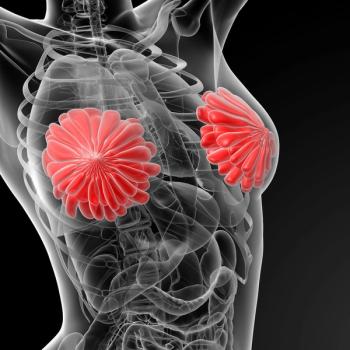
Blood Draw Could Detect AI Resistance in Breast Cancer
Researchers have developed a blood-based assay that detects ESR1 mutations in circulating tumor DNA and could predict treatment failure in breast cancer patients.
Researchers in the United Kingdom have developed a sensitive blood-based assay that can detect mutations in the estrogen receptor gene ESR1, a known mechanism of resistance to aromatase inhibitors (AIs), in the circulating tumor DNA of patients with hormone receptor–positive breast cancer. ESR1 mutations were previously uncovered in analyses of metastatic tumors exposed to aromatase blockers.
The study,
Nicholas C. Turner, MD, PhD, a medical oncologist at the Royal Marsden NHS Foundation Trust in the United Kingdom, and colleagues analyzed ESR1 mutations in circulating tumor DNA from blood samples of 171 women with metastatic breast cancer. Mutations in ESR1 were found only among women who had previously been exposed to AI therapy. Only 5.8% of women first exposed to an AI as adjuvant therapy had a detectable ESR1 mutation compared with 36.4% of women who first received an AI for the treatment of metastatic disease (P = .0002). Patients with these mutations had substantially shorter progression-free survival when treated on subsequent AI-based therapy (hazard ratio, 3.1 [95% confidence interval (CI), 1.9–23.1]; P = .0041).
In a separate, independent cohort of 32 breast cancer patients, no ESR1 mutations were detected in the tumor biopsies of patients who progressed on an adjuvant AI, but serial sampling of a metastatic breast cancer patient treated with AI-based therapy detected an ESR1 mutation as the dominant tumor mutation.
The women with detectable ESR1 mutations were three times as likely to progress on an AI.
The results, according to the study authors, suggest that hormonal therapy may not be beneficial in advanced disease, and that early treatment with hormonal therapy is likely to provide the best chance for preventing resistance to an aromatase inhibitor. “The test could give doctors an early warning of treatment failure and, as clinical trials of drugs that target ESR1 mutations are developed, help select the most appropriate treatment for women with advanced cancer,” said Turner in a statement.
The study demonstrated a 97% match in ESR1 mutation status between the blood draw and tumor sample. The blood draw–based test, if confirmed, could be a way to rapidly check breast cancer patients for tumors resistant to AI therapy, and to see if further AI treatment will be beneficial or if the patient needs to switch to a different therapy.
Newsletter
Stay up to date on recent advances in the multidisciplinary approach to cancer.


















































































